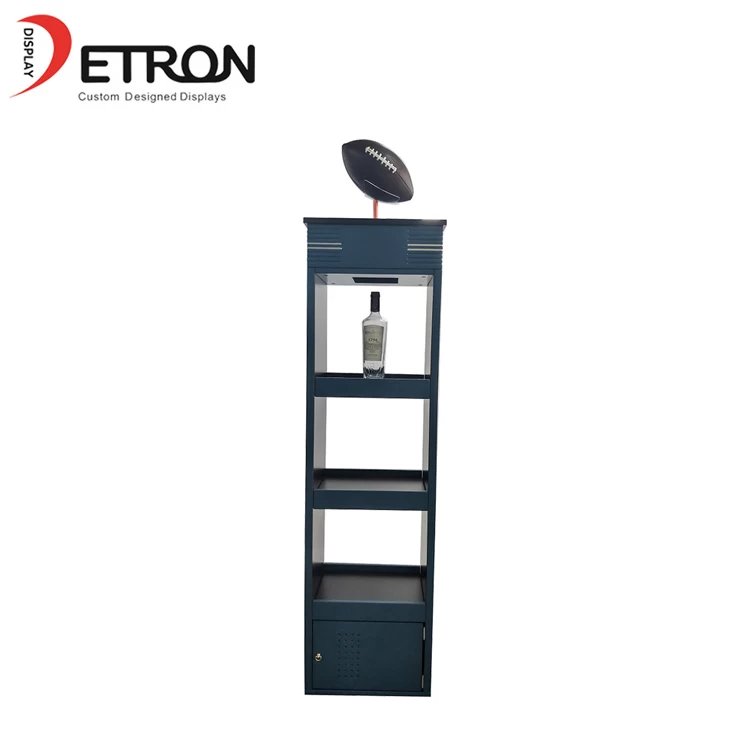Commercial space display design

(1) Store window design
The shop window is not only an integral part of the overall design of the façade, but also the first exhibition hall and "eye" of the store, often based on the goods sold by the business, with clever use of sets, props, background decoration as a background, with the appropriate lighting, color and text description.
(2) Exhibit design
Counter shelves, landscape sketches and shoe changing seats placed in the commercial environment of the store, we call it the "props" of the commercial environment, these "props" not only have the function of displaying and displaying goods, but also beautify the commercial space environment and enhance the function of commercial themes.

(1) Center display
The center display method is a display method that focuses on the center of the entire display space. Put some important, large-scale goods on the display center position to highlight the display, and other minor small items around it to assist in displaying.
The central display method is characterized by a prominent theme, concise and clear. Generally, there is no central display shelf at the entrance, middle or bottom of the shop, but a special exhibition stand. It allows customers to view the goods on display from four directions. The display equipment of the island display should not be too high, too high will affect the spatial vision of the entire store, and will also affect the perspective of customers on the island display from four directions.
(2) Unit display
Unit display refers to the same goods, decorations, POP and other display subjects or logos, advertisements, etc., repeated in a certain range or different display surfaces, through repeated emphasis and suggestive means, to strengthen the customer's visual feeling of clothing products or marques. The characteristic of the unit display method is to make the customer subjected to repeated visual impact, so as to be strengthened many times in the feeling and impression, and has the implied effect of "the product is the only choice", which can make the customer leave a very deep impression.
(3) Close-up display
Close-up display refers to highlighting the functions and characteristics of the product, or using advertising, props and mobile landscaping means, emphasizing the target customers of the product, so that the display and publicity have a clear goal, and can strengthen the communication with customers, help to improve the attractiveness of the product, stimulate the customer's desire to buy. The features of the close-up display method are clear goals, prominent themes, strong landmarks, and concentrated influence, so that customers have a sense of belonging and intimacy.
(4) Open display
Open display is to put the goods in a place where the customer can touch it, so that the customer can participate in it, and the product can be directly touched. The open display method is characterized by strong authenticity and high timeliness. It is a modern form of counterless selling that combines display and sales. All the goods are hung or placed on the shelves and counters, and customers can freely choose without repeated inquiries. This method is not only convenient for customers, making them feel natural and casual, but also easy to stimulate customers' purchase interest.
(5) Affichage complet
L'affichage complet consiste à afficher certaines marchandises ayant la même fonction et la même méthode d'utilisation ensemble. La méthode d'affichage complète est caractérisée par une variété complète et un grand espace de sélection. L'affichage complet des biens, des ornements, des arrière-plans et des lumières et d'autres scènes constituent des saisons différentes, des espaces de vie différents, des environnements naturels différents et des humeurs artistiques différentes, donnant aux gens un fort sens de la vie. Faites attention à l'incarnation du sentiment de réalité et de la création d'humeur et d'atmosphère, et mettez l'accent sur l'art et l'innovation, de sorte que les gens puissent être d'inspiration et de plaisir esthétique, mais ont également un sentiment d'immersion. Dans le même temps, l'espace devrait pouvoir expliquer vivement et éclairer l'utilisation et les caractéristiques des produits de vêtements, de manière à guider les clients à magasiner.

(1) éclairage de base
L'éclairage de base est principalement d'étendre la lumière dans l'ensemble du magasin, tout en maintenant une couleur uniforme dans le magasin, de manière à assurer l'éclairage de base dans le magasin.
(2) éclairage d'accentuation
Pour la marque principale, l'application de l'éclairage clé est très importante. L'éclairage clé peut non seulement rendre le produit forme une sensation tridimensionnelle, mais également le contraste fort de la lumière et de l'ombre est également propice à la mise en évidence des caractéristiques du produit.
(3) Éclairage auxiliaire
Le rôle principal de l'éclairage auxiliaire consiste à mettre en évidence le niveau de couleur dans le magasin, rendant l'atmosphère colorée et les effets visuels, et améliorer auxiliaires l'attractivité et l'attrait du produit. Outre les sources de lumière artificielles, la lumière naturelle qui change au fil du temps, la qualité de la lumière mappée sur la surface de la marchandise, la qualité de la lumière émise de la surface de l'objet, la teinte apparente de la lumière elle-même et la reproduction Le taux de couleur est également très important. Par conséquent, seulement après que le système prend en compte les différents effets produits par la lumière, les différentes sources de lumière sont ajustées et appliquées, de manière à garantir que la lumière rend toujours l'atmosphère du magasin, met en évidence l'affichage des marchandises et améliore la effet d'affichage.


















